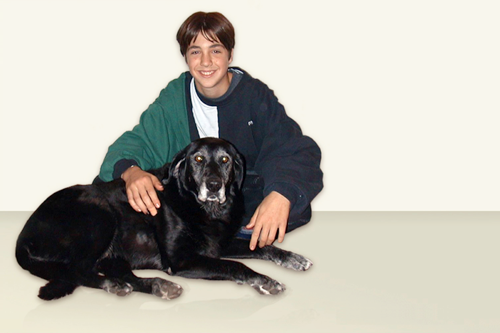Dogs have an uncanny knack for picking up emotional cues from their masters, for a number of reasons. Their keen sense of hearing allows them to detect subtle differences in the master’s voice that they learn to associate with emotional shifts. Their exceptional sense of smell can detect secretions indicating fear responses and stress. Research has also shown that dogs and humans use similar mechanisms in the brain to process sound—a key reason why human vocal communication is so effective with their “best friends.” The bond between dog and man can extend to heart patterns as well. And when the bond is strong, their hearts may both be in coherence, a state of smooth, ordered heart-rhythm patterns. Coherence is associated with calmness, rational thinking, and a well-performing immune system.
Few people know more about heart coherence in man and beast than Dr. Rollin McCraty, director of research at the Institute of HeartMath (IHM). But while most of his research at IHM has been high-tech, utilizing state-of-the-art imaging equipment and sensors, a very low-tech experiment he conducted has been the biggest crowd pleaser in his presentations. The experiment involved only two subjects: his son Josh, then 15, and Mabel, the boy’s dog.
 For the experiment, Mabel was hooked up to a Holter monitor—a portable device that records the rhythm of the heart continuously via electrodes attached to the chest—then brought into an IHM lab. As she ran around and explored the new territory, her heart rhythm was all over the map. Josh then entered the lab and was also hooked up to a monitor. He sat down, remaining as quiet as he could, and began using a technique known as “heart-lock in.” “You pretend you’re breathing in through the area of the heart, which starts the process of getting coherent and activating a positive feeling,” explained Dr. McCraty. Josh was instructed to direct feelings of love toward Mabel, but have no physical contact with the dog. Soon, Mabel came over and lay down on the floor next to Josh.
For the experiment, Mabel was hooked up to a Holter monitor—a portable device that records the rhythm of the heart continuously via electrodes attached to the chest—then brought into an IHM lab. As she ran around and explored the new territory, her heart rhythm was all over the map. Josh then entered the lab and was also hooked up to a monitor. He sat down, remaining as quiet as he could, and began using a technique known as “heart-lock in.” “You pretend you’re breathing in through the area of the heart, which starts the process of getting coherent and activating a positive feeling,” explained Dr. McCraty. Josh was instructed to direct feelings of love toward Mabel, but have no physical contact with the dog. Soon, Mabel came over and lay down on the floor next to Josh.
As Josh continued radiating good feelings, his heart rhythms became more coherent. What’s more, his coherence appeared to influence Mabel’s heart rhythms as well; they changed soon after Josh’s did. Further supporting the notion that Josh’s love was “contagious,” Mabel’s heart activity became more erratic when Josh left the room—an indication of separation anxiety.

Dr. McCraty points out that what happened to Josh and Mabel did not demonstrate entrainment, which is when heart rhythms are synchronized and match a specific frequency. “But the point is,” he said, “Mabel had an obvious state shift. You could call it ‘dog coherence.’”
Since this experiment was performed, extensive data have been accumulated to confirm the powerful effects of heart coherence. “We know that the heart generates an electromagnetic wave, and magnetometers can measure the cardiac field just under three feet away from the body,” says Dr. McCraty. “What is really interesting is that with adults five feet apart we see heart rate synchronization. So our nervous systems are exquisitely tuned in to this field.” Extensive findings have been generated showing that there are energetic communications between humans, between humans and animals, and between animals as well. The closer the emotional connection—such as that between a mother and her child—the greater the energetic connection. Equally important: This energy can be directed inward by a person to improve well-being and self-image.
We have to remember, though, that even a powerful bond between a dog and its owner can be upstaged. When a dog hears the bark of a canine compadre at the same time as her master’s voice, she is more likely to respond to the dog.
If you liked this article, you may also enjoy reading:
- Can Your Heart’s Energy Change the World?
- Rollin McCraty: Closing the Gap Between Heart and Brain
- Your Heart and Stomach May Be Smarter Than You Think
Click here to find out about Rose’s thoughts on wellbeing and health




1 Comment
Michael Austin
Nice article, thanks. I’ve met Dr. McCraty and heard him present about his work at HeartMath. I searched for a simple article like this to send to friend, a retired thoracic surgeon who is now a priest. The priest’s daughter was just adopted by a tiny purebred something-apoo, named “Buddy,” who I met today for the first time. Buddy must weigh less than 10 oz. But he’s playful and adventurous and his personality melted me on the spot.